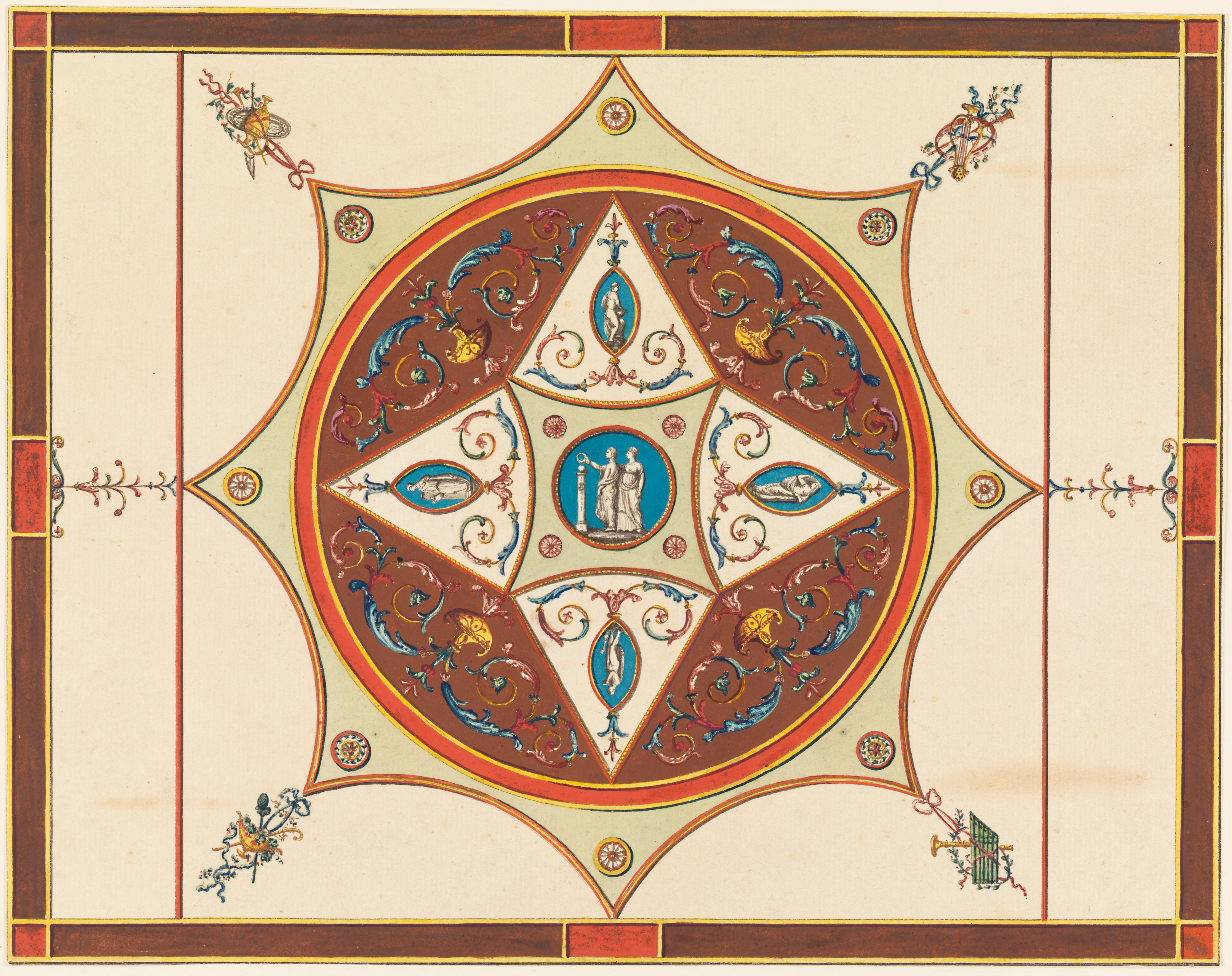Frederick Crace on:
[Wikipedia]
[Google]
[Amazon]
 Frederick Crace (3 June 1779 – 18 September 1859) was an English
Frederick Crace (3 June 1779 – 18 September 1859) was an English
 Frederick Crace (3 June 1779 – 18 September 1859) was an English
Frederick Crace (3 June 1779 – 18 September 1859) was an English interior decorator
Interior design is the art and science of enhancing the interior of a building to achieve a healthier and more aesthetically pleasing environment for the people using the space. With a keen eye for detail and a creative flair, an interior ...
who worked for George IV when Prince of Wales, for whom he created the chinoiserie
(, ; loanword from French '' chinoiserie'', from '' chinois'', "Chinese"; ) is the European interpretation and imitation of Chinese and other Sinosphere artistic traditions, especially in the decorative arts, garden design, architecture, lite ...
interiors of the Brighton Pavilion. Crace was also a collector of maps, topographical prints, and drawings, now at the British Library
The British Library is the national library of the United Kingdom. Based in London, it is one of the largest libraries in the world, with an estimated collection of between 170 and 200 million items from multiple countries. As a legal deposit li ...
.
Frederick was the son of the prominent London decorator John C. Crace (1754–1819), who had been hired in 1788 to provide Chinese works of art for the Royal Pavilion.
Beside his familiar interiors at the Marine Pavilion in Brighton, Crace provided interiors at Windsor Castle
Windsor Castle is a List of British royal residences, royal residence at Windsor, Berkshire, Windsor in the English county of Berkshire, about west of central London. It is strongly associated with the Kingdom of England, English and succee ...
and Buckingham Palace
Buckingham Palace () is a royal official residence, residence in London, and the administrative headquarters of the monarch of the United Kingdom. Located in the City of Westminster, the palace is often at the centre of state occasions and r ...
, in which he was assisted by his son, John Gregory Crace.
Frederick married Augusta Harrop Gregory, the daughter of John Gregory, a London magistrate and treasurer of the Whig Club. In 1830, his son John Gregory became a full partner in the family business, thereafter known as Frederick Crace & Son, on inheriting property and capital from his mother, who died in 1827. Crace & Son designed the St James's Theatre
The St James's Theatre was in King Street, St James's, King Street, St James's, London. It opened in 1835 and was demolished in 1957. The theatre was conceived by and built for a popular singer, John Braham (tenor), John Braham; it lost mone ...
, London (1835), and the younger Crace developed into a well-regarded designer of theatres on his own.
For Crace's collection of topographical prints and drawings, Thomas H. Shepherd was employed to paint old London buildings prior to their demolition to provide a historical record.
He died at his home in Hammersmith
Hammersmith is a district of West London, England, southwest of Charing Cross. It is the administrative centre of the London Borough of Hammersmith and Fulham, and identified in the London Plan as one of 35 major centres in Greater London.
It ...
on 18 September 1859, aged 80.'The Late Mr. Frederick Crace', '' The Builder'', 1 October 1859, p. 647. He was buried at West Norwood Cemetery
West Norwood Cemetery is a rural cemetery in West Norwood in London, England. It was also known as the South Metropolitan Cemetery.
One of the first private landscaped cemeteries in London, it is one of the " Magnificent Seven" cemeteries of ...
. His extensive collection of British topography was purchased for the British Museum by his son in 1880.
References
*Notes
{{DEFAULTSORT:Crace, Frederick 1779 births 1859 deaths English interior designers Antiquarians from London Burials at West Norwood Cemetery